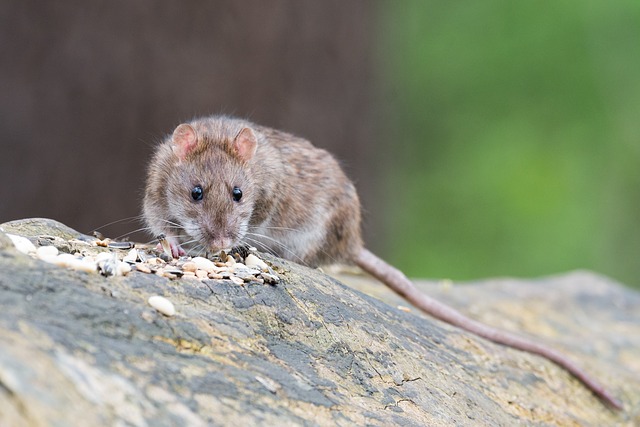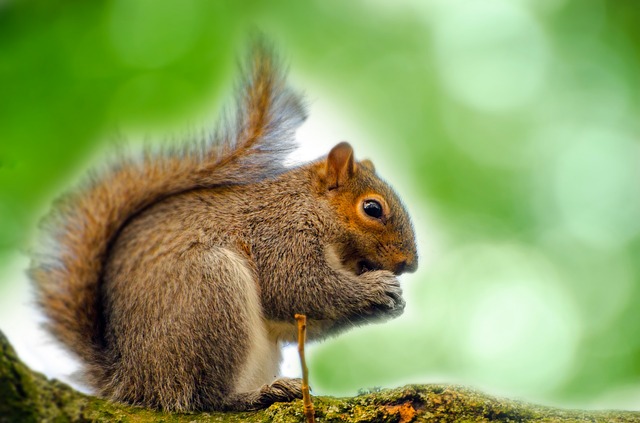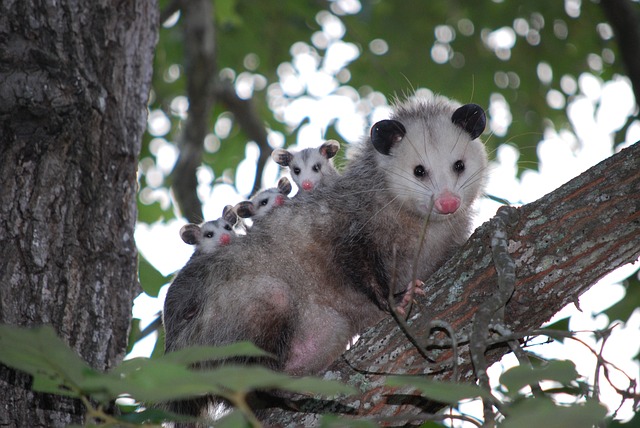Rodents and Wildlife
Rodents and wildlife are part of an important ecosystem and Rodent Exclusion belongs in our rich Texas nature. Unfortunately, they do not belong in our attics, kitchens, or homes altogether. Rodents can spread disease and harmful bacteria. It is important to keep rodents and wildlife far from our families. There are multiple approaches to eliminate a rodent or wildlife infestation from a home but only one method offers a long term solution, and that is stopping rodents from gaining access and removing the existing ones. We do have the solution, this is commonly known as a rodent exclusion.
Your Neighborhood Pest Control has perfected this Rodent Exclusion process into 4 steps
Your Neighborhood Pest Control’s Rodent Exclusion
A Thorough Home Inspection
First, your technician will inspect the structure of your home in order to determine how rodents are gaining access into the home. This part may require looking for rat, mice, or wildlife “entry points” around the ground, siding, roof line, roof, vents, A/C lines, etc.
Sealing all entry points
Once we have determined how the rodents are gaining access, we proceed to sealing all entry points. We use a variety of products resistant to rodent interference. This will make your home inaccessible to rodents or wildlife entering inside again.
One way door and trapping
Now that the rodents outside won’t be allowed back in, it’s time to eliminate the infestation inside. We’ll install a one way door so that rodents sealed inside may leave for water, but will not be able to enter again.
Attic or Crawl Space Sanitation
Once the infestation is removed, we can now sanitize the attic. Depending on each situation this may include- vacuuming droppings, removing traps, and applying pesticides or cleaning agents. This will ensure your home remains flea and parasite free.
Frequently asked questions
We try to avoid the use of poison anytime is possible. Unfortunately, most effective rodenticides, come in the form of bait. This means, in order to kill a rodent, it must attract it first. This means a high kill rate but also a high attraction rate. This leads to a never ending cycle of baiting as poison does not keep new activity from gaining access, but on the contrary, it encourages it. Over time this may lead to rodents dying inside the walls, attic, or inaccessible areas. Eventually flea and fly infestations may occur from decomposing rodents. Rodenticides cause dehydration, in a attempt to force rodents out to look for water, but this can also lead to water or condensation lines being chewed to gain access to water. Overtime the use of bait creates more problems than solutions. It’s an option best used when exclusions are not possible.
Trapping by itself does not keep new activity from gaining access to the structure. This means, trapping will have to continue indefinitely. Unlike poison, dead rodents may be retrieved from the traps but trapping alone offers a low kill rate. Activity will likely persist at the same level
Rodents and wildlife may become discouraged to nest in an area due to repellants. However, they become easily ignored if survivability is at stake. The other problem with any repellant is that it quickly loses potency. There are no effective long term repellants in the industry. Often, professionals will only use a repellant to remove a rodent from a hiding spot, and as it runs away, the entry point is sealed to avoid further activity, but never as a mean to control future infestations. It is considered ineffective as part of long term program. Electronics are yet to provide evidence of efficiency by third party studies.
How much is a rodent exlusion?
Rodent exclusion prices vary drastically. In some cases, rodent exclusions may have been done by previous home-owners, but as roofs, a/c units, siding sections are replaced, often contractors will not rodent proof new modifications. This types of exclusions are very low cost as most of the work is already done, and prices may be in the range anywhere between $250 to $450 including trapping. In other cases, however, homes may have rotted sections of siding, un-screened ventilation systems, open soffit returns (eaves), gaps between siding and support boards, open garage corners…etc. And those usually are more costly in materials and are labor intensive. This will range in the $750 to $3500 depending on the scope of work. Lastly, very large homes and multi-housing buildings, with vast amount of structural flaws and damage may drastically increase the price. We, at Your Neighborhood Pest Control, however, are a small team with low over head cost. We usually price well below market price while still delivering a higher quality of work. Usually we encourage our first time customers to get multiple quotes, as we are very confident in our work and prices. Check our reviews!
Does an exclusion come with a warranty?
Yes, all exclusion work comes with a one year warranty by default and may be renewed yearly. Some structures qualify for a lifetime warranty.
When should I do a rodent exclusion?
The best time to exclude rodents from your home is before an initial infestation occurs. Once a rodent gains access to an structure, the droppings they start to accumulate attract new activity from outside, thus leading to an infestation. Most houses and buildings, even when recently built, have structural flaws easily exploited by rodents. This is more important in new developments as rodent activity is high in population and now became disturbed and in need of shelter from the winter. Once rodents are inside, excluding them, is again, the only method that can lead to a long term solution.
Can I still do a rodent exclusion if I already used poison?
Yes, but make sure to communicate this information during the initial inspection. This will give us a chance to retrieve most of the poison and/or put an emphasis on installing one way doors vs trapping. If an structure becomes sealed, and poison is left behind with no one way doors, existing activity likely will die and often in areas difficult to access.
What if rodents are in my kitchen I have children and pets around?
Usually, a rodent problem extends from the attic to the kitchen if the infestation is left unsolved during a long period. This is because as they have shelter inside the attic or crawl space, their population grows to they point they need to start scavenging for food sources to survive at faster rate. Fortunately, the exclusion process is still the same. The only added factor is that we require that any food sources critters use, to become secured. For example, if they are eating your grains, they may need to be removed or secured in glass containers to avoid food competition against the traps. Additionally, our trapping will include secured boxes which allow rodent access to the trap but impossible for children and pets to access, as we used the most secure traps the industry can offer.
Learn More About Common Home Invaders
Rats and Mice

There are many species of rodents, but the most common types in Texas are roof rats, Norway rats, and common house mice. They’re experts in navigating through small spaces. A mouse only needs a 1/4 inch gap, while a full grown rat can fit into anything over 1/2 inch. Rodent infestations occur more often in the colder months, when low temperatures and scarcity of food forces them to seek shelter. Rodents can do significant damage once inside a home or attic. They’re known to chew on air conditioning lines, air vents, dishwasher lines, and other electrical cords. Their teeth allow them to get through a variety of materials including thick plastic, sheet rock, wood, and aluminum. We use a variety of products that rodents can’t get through to keep them out.
Squirrels

Squirrels have a better reputation than rodents, largely due to their cute appearance and behaviors. However, they can be just as much of a nuisance as rodents if they gain access to your attic. Squirrels tend to be more destructive to cables and wires. Their front teeth never stop growing, so they need to chew on a variety of things to keep them at a comfortable length. It’s not uncommon to find both rat and squirrel activity in an attic. Squirrels have few natural predators and a decreasing natural habitat, which means there’s a high population that needs to find warm shelter in the winter. Live cages are set in attics to remove any inside once your home has been sealed.
Possums

Possums gain entrance into homes through large holes around the house. Unlike rodents, they don’t often create their own access by gnawing holes, but they can easily take advantage of existing large openings. Possums aren’t known to be aggressive. Instead, they use their self-defense mechanism and play dead when threatened or frightened. This technique also includes the release of an unpleasant odor to ward off predators. Possums are very easy to catch as they aren’t wary of cages like other animals. However, you must ensure your home is properly sealed before trapping and removing them, as they can easily enter right back inside.
Raccoons

Raccoons need large openings to enter into homes and attics. Unlike possums, they can easily force a way in for themselves. Raccoons are well known for their strong and dexterous hands, which they can use to tear off shingles or other materials to gain access. Due to their large size, they can make a lot of noise in an attic indicating an infestation. Raccoons are extremely intelligent and can easily become trap smart if they’ve had an experience with one before. Often times, female raccoons take residence in attics for shelter once they’ve had a litter of babies. It’s important to check for any signs of young raccoons before excluding adults from the attic.
3 Common Type of Entry Points
Often times, home owners may think there is just once place rodents and wildlife use to gain access into the house. In reality, rodents are survivors and can fit through very tight places, make their on entry points and exploit weak structural areas! We are experts in identifying every entry point and then sealing it using products that are rodent and wildlife resistant.

The above picture is an example of a rodent/wildlife-made-entry-point. This is when the critter helps itself in by creating its own entry points. Common entry points like this occur in chimneys, suffit, siding, and vents.

This is an example of an structural flaw. This gap is between trim and siding, a common entry points for roof rats, norway rats, and mice. This allows the rodent to gain access into the house by exploiting already existing entry points

This is a type of ventilation found in roofs called ridge vent. This type of ventilation is considered a weak area as it is made of thin plastic. This can be easily chewed by rodents to gain access in the attic.


